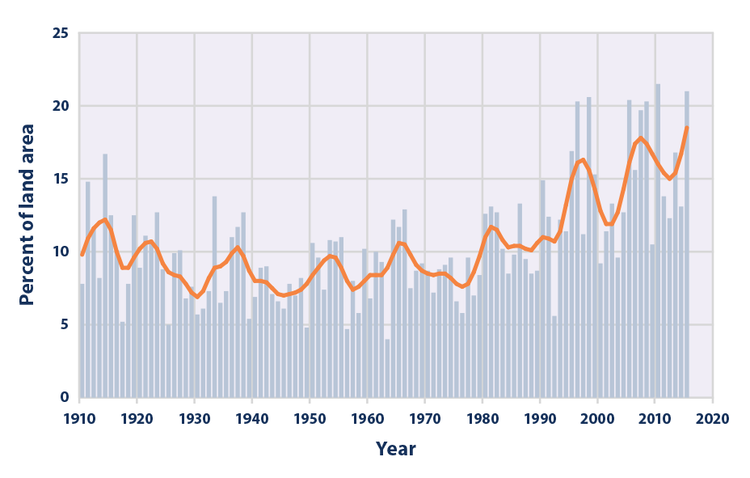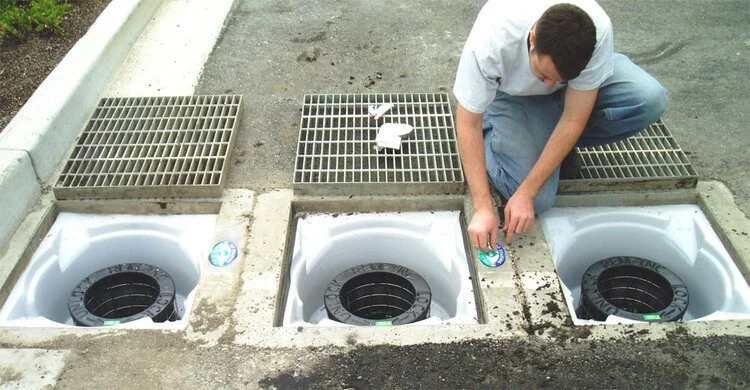A DAM-AGING STORMWATER REPORT CARD FROM ASCE
Blog by Tom Hershberger, MS, MBA
Infrastructure is a hot topic now, and it’s long overdue for more than just discussion during National Infrastructure Week.
The American Society of Civil Engineers (ASCE) have been focused on this topic since 1988, producing a regular report card for US infrastructure. At first, there were 12 categories, and with this year’s addition of Stormwater, there are 18 categories.
Urban flooding is problem #1
Urban flooding results in more then $9 billion in damages annually, while federal funding to support stormwater maintenance/upgrades averages about $250 million annually. It’s not surprising that stormwater infrastructure is in bad shape and has earned a grade of “D” from the ASCE.
Stormwater runoff is defined as rain or snowmelt that travels over impervious surfaces or cultivated areas, then is collected and drained into streams, rivers, lakes, bays or oceans. These systems of stormwater conveyance take many forms, from canals, to sewers, detention ponds and constructed wetlands.
In the US, there are approximately:
3.5 million miles of storm sewers
270 million storm drains
2.5 million stormwater treatment assets
Stormwater systems are a mix of publicly-owned (by local, state and the federal government) and privately-owned assets. The EPA is tasked with regulating all of this, but their focus has primarily been on Municipal Separate Storm Sewer Systems, known as MS4s. Because of this, most municipalities have an asset management / maintenance program.
On the other hand, corporate property owners or homeowners associations are not routinely monitored, which leads to deferred maintenance and increases the likelihood of urban flooding and increases the threat of pollution from runoff.
Stormwater conveyance systems have a lifespan of 50-100 years (depending on what materials were used in the original construction, such as reinforced concrete, corrugated metal or PVC). Because most stormwater systems are paid for by local fees or taxes, that often means that maintenance and/or replacement have been postponed, leaving many communities with dangerously outdated stormwater infrastructure.
Even in communities where stormwater systems were constructed more recently (within the past 30 years), it’s likely that they weren’t designed for today’s capacity needs, especially with the growing frequency of high-precipitation events.
This figure shows the percentage of the land area of the contiguous 48 states where a much greater than normal portion of total annual precipitation has come from extreme single-day precipitation events. The bars represent individual years, while the line is a nine-year weighted average.
Beyond flood mitigation
Stormwater runoff causes lots of problems besides flooding. Every year, an estimated 57 million Americans are sickened by contaminated water in recreational areas. An 2019 analysis of fecal indicator bacteria sampling data from beaches in 29 coastal and Great Lakes states and Puerto Rico, reveals that 386 beaches – nearly one of every eight surveyed – had potentially unsafe levels of pollution on at least 25 percent of the days that sampling took place that year.
Additionally, other types of pollutants flow into our waterways when stormwater is not controlled. For example, the quantity of used oil from a single oil change can pollute up to one million gallons of fresh water. Then there’s all the litter, construction debris, fertilizer, pesticides, road salt, pet waste, etc., that regularly flows into storm sewers. In an up-to-date stormwater system, these pollutants can flow into swayles, rain gardens where they can be held and filtered, instead of flowing directly into a stream, lake or ocean.
It’s vitally important that these systems are brought up-to-date.
Learning to make the most of what we have
Additional money for infrastructure may be on its way, but in the meantime, many municipalities and stormwater management organizations are already executing a plan to be compliant with EPA regulations and plan for the future.
The recommended first step toward improving a stormwater system is to have a comprehensive understanding of the location and condition of all existing stormwater assets. This can be very challenging because oftentimes in municipalities, these records are kept in different departments, housed in different databases or even kept in paper files.
Fortunately, technology can really help with this issue. Geographic Information Systems (GIS) are increasingly being used to manage all types of municipal activities. GIS location-based information is extremely useful in managing stormwater assets spread across a specific geographic area. Today, municipalities are busy creating a digital twin of their existing city, which is a great concept that has real-world benefits but also faces real-world disconnects.
Example images from a geographic information system (GIS) illustrating storm-sewer infrastructure.
One very common disconnect is that the assets a digital map displays are not what maintenance workers find when they come to a job site. For example, they may be tasked to perform an inspection or maintenance on a catch basin located on a specific intersection. They use the GPS to guide them to that location. Upon arrival, they see not one, but four or even eight catch basins in that area. So they have to invest time in working with the office to identify the right basin, or they just pick one and hope it’s the right one.
Unfortunately, guesswork is what the GIS digital twin was supposed to eliminate.
There’s a simple solution that can permanently resolve that issue, while simplifying field documentation. It involves marking assets with an RFID tag, then connecting those tags to their records in the GIS using a standard mobile device.
InfraMarker connected RFID makes all the difference
When marked with RFID tags, field workers no longer need to guess which asset to work on. They can simply have assets identify themselves with a quick read of the RFID tag. Once they identify the asset they need to work on, the right form will pop up and they can complete the work and move on.
InfraMarker RFID-enabled markers directly connect the physical and digital worlds in a way that delivers fast, accurate and auditable asset management. This approach fits into existing field workflows while leveraging existing GIS/Asset Management platforms. InfraMarker connects specific infrastructure assets to their unique digital records, providing accurate, auditable and actionable data to asset managers, often in real time.
RFID-enabled asset management not only ensures that the digital twin is accurate, it generates an audit trail that meets the EPA regulations for compliance.
This simple solution is now being used for all kinds of infrastructure assets across the country, including municipal stormwater assets.
See a quick video of how InfraMarker Connected RFID works to mark and manage stormwater assets here.
To learn more, contact us!.




